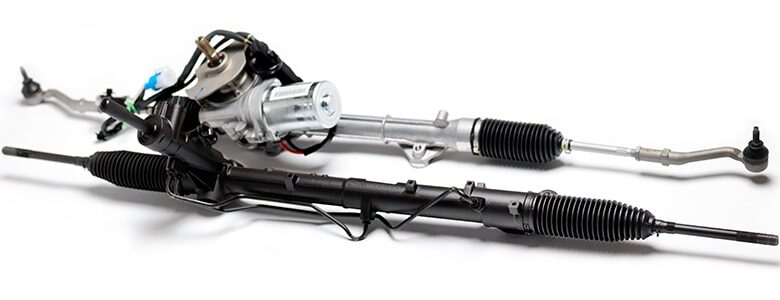Choosing Durable Steering Rack Components for Safety

Steering rack components are critical to the safe and smooth operation of a vehicle’s steering system. As the primary system responsible for translating the driver’s inputs from the steering wheel to the wheels, steering racks play a crucial role in maintaining control over the vehicle. In addition to the performance of the steering rack, the BiLED Retrofit Projector is another component that can significantly enhance driving safety and visibility. By providing superior lighting, this retrofit projector improves night-time driving conditions, ensuring better road illumination and reducing glare for other drivers. With so much riding on the quality and durability of these components, understanding their function, types, and the importance of maintenance is essential for both vehicle owners and those in the automotive industry.
Understanding the Role of Steering Rack Components in Vehicle Safety
Steering rack components serve as the heart of the steering system. They enable a driver to easily control and direct the vehicle by converting the rotational motion of the steering wheel into the lateral movement required to turn the wheels. Steering racks also contribute to the vehicle’s ability to respond quickly to changes in direction, ensuring stability, especially at high speeds or on winding roads. Therefore, well-functioning steering rack components are indispensable for safe driving.
Over time, wear and tear on the steering rack can result in poor handling, vibrations, or even complete loss of control. Consequently, choosing durable, high-quality steering rack components directly impacts not only the driving experience but also the safety of the driver and passengers. Understanding how these components work and how to select quality parts is essential.
Main Components of the Steering Rack System
A steering rack system consists of various parts, each with a distinct function:
- Rack and Pinion Gears
These are the main components that convert rotational motion from the steering wheel into the linear motion needed to turn the wheels. The pinion is connected to the steering shaft, while the rack is a toothed bar that moves left or right based on steering input. - Tie Rods
Tie rods connect the steering rack to the wheels, allowing for the direct transfer of motion. They ensure that the wheels move in unison with the steering rack, making steering responsive and stable. - Bushings and Bearings
These smaller components help reduce friction between parts and ensure that movements are smooth. High-quality bushings and bearings reduce wear on other components, extending the steering system’s lifespan. - Seals and Gaskets
Seals and gaskets play an essential role in preventing fluid leaks in systems with hydraulic steering. Leaks can lead to reduced steering performance, making it crucial to select durable sealing materials. - Steering Rack Housing
The housing protects internal parts from dust, debris, and moisture. It provides structural support, keeping the components aligned for optimal performance.
Each of these steering rack components is essential to the vehicle’s overall steering system. If one part fails, it can compromise the entire system, potentially leading to unsafe driving conditions.
Types of Steering Racks and Their Impact on Durability
There are two main types of steering racks: manual and power-assisted.
- Manual Steering Racks
Manual steering racks are simpler in design, consisting of just the rack and pinion mechanism without hydraulic assistance. While they are generally more durable due to their simplicity, manual steering can be strenuous on the driver, especially in heavier vehicles or during slow-speed maneuvers. - Power-Assisted Steering Racks
Power-assisted or power steering racks, on the other hand, use hydraulic or electric power to reduce the effort required by the driver to turn the wheels. Hydraulic power steering racks rely on fluid pressure to provide assistance, while electric power steering uses a motor. While power steering systems offer easier handling, they are more complex and have more components prone to wear, such as pumps and hoses.
Choosing the right type of steering rack depends on the vehicle type, driving needs, and personal preference. Regular inspection and maintenance can extend the lifespan of any steering rack, although power-assisted systems may require more frequent upkeep.
Choosing High-Quality Steering Rack Components for Optimal Performance
Selecting high-quality steering rack components enhances safety, durability, and handling. Here’s what to consider:
- Material Quality
Components made from high-quality materials, such as steel or durable alloys, resist wear and tear better than cheaper options. Premium materials also reduce the likelihood of corrosion and increase longevity. - Brand Reputation
Opting for components from reputable manufacturers provides peace of mind, as these companies typically adhere to industry standards and undergo rigorous testing. - Compatibility
Ensuring the components are compatible with your vehicle’s make and model is crucial. Using incompatible parts can lead to inefficient steering, increased wear, and potential safety risks. - Warranty and Customer Reviews
Components with a solid warranty offer added security. Additionally, customer reviews provide insight into the component’s performance and reliability under various conditions.
Common Steering Rack Issues and Maintenance Tips
Regular maintenance is key to prolonging the life of steering rack components. Some common issues include:
- Fluid Leaks
In hydraulic steering systems, leaks are common due to worn-out seals or hoses. Regularly check for leaks to prevent performance issues and costly repairs. - Steering Play
Excessive play in the steering wheel may indicate worn bushings, tie rods, or rack gears. If left unaddressed, it can lead to unpredictable steering. - Strange Noises
Unusual noises, such as grinding or clunking, often suggest internal wear. These sounds should be inspected promptly to prevent further damage.
Routine inspections and timely repairs are essential. Replacing worn parts and using high-quality steering rack components can extend the system’s life and ensure a safer driving experience.
FAQs
1. What are the main parts of a steering rack system?
The main components include the rack and pinion gears, tie rods, bushings, bearings, seals, and the steering rack housing. Each part plays a specific role in facilitating smooth and responsive steering.
2. How often should steering rack components be checked?
It’s recommended to inspect steering rack components at least once a year or during routine vehicle servicing. Frequent checks are especially important for vehicles used in challenging conditions or with high mileage.
3. How can I tell if my steering rack components are worn out?
Signs of worn components include increased steering effort, fluid leaks, excessive play in the steering wheel, or unusual noises while turning. If you notice any of these signs, consult a professional mechanic.
4. Can I replace just one steering rack component?
While it’s possible to replace individual parts, it’s often advisable to check the entire system and replace other parts if they show signs of wear. This ensures balanced performance and prolongs the system’s lifespan.
5. Are aftermarket steering rack components reliable?
Aftermarket components can be reliable if sourced from reputable brands. Ensure compatibility with your vehicle, and look for reviews and warranties when selecting aftermarket options.
Conclusion
Choosing durable steering rack components is essential for maintaining safe and reliable vehicle performance. These components form the foundation of the vehicle’s steering system, enabling precise control and quick response. By investing in high-quality materials and prioritizing regular maintenance, drivers can protect their steering system from premature wear, ensure a smoother ride, and, most importantly, enhance overall safety on the road.



